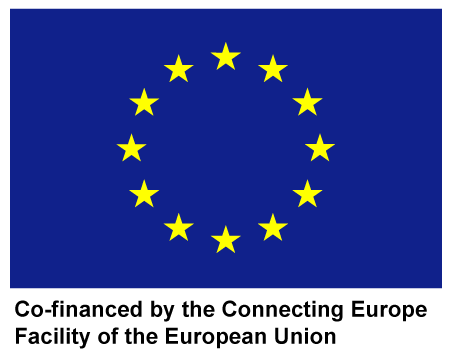
Cooperative Urban
Mobility Portal
Explore Connected and Cooperative Mobility

Cooperative
Urban Mobility Portal
Explore Connected and Cooperative Mobility
Open Common Log Data Format
C-MobILE uses an open common log data format for Cooperative, Connected and Automated Mobility. The specification is open in the sense that it is publicly available on https://ada1.tno.nl/logformats/. In the frame of the C-MobILE project the version 0.7.10 has been used. The specification is common in the sense that it is developed and shared with many partners, and reused and extended over other deployment projects.
The objectives of the specification are to:
- Support and scope the logging for verification, validation and evaluation phases
- Reuse of toolsets for data logging, management and analysis in successive projects
- Use and share open tools and standards
- Flexibility to select standard data and file formats in specific projects
The specification separates the specifications of structure, parameter definition, encoding, data formats and file formats. To ensure maximum interoperability, the following messages standardised by ETSI are used.
| C-MobILE Message Types | |||
|
CAM
|
ETSI EN 302 637-2
|
v1.3.2 |
Cooperative Awareness Message
|
|
DENM
|
ETSI EN 302 637-3
|
v1.2.2 |
Decentralized Environmental Notification
|
|
CDD
|
ETSI TS 102 894-2
|
Common Data Dictionary for all messages
|
|
|
MAP, SPaT, SRM, SSM
|
ETSI TS 103 301
|
ETSI header including version for TS 19091
|
|
|
MAP, SPaT, SRM, SSM
|
ISO/TS 19091
|
Based on SAE J2735
|
|
|
IVI
|
ISO/TS 19321
|
Dictionary of in-vehicle information (IVI) data structures
|
|
|
Road Sign codes
|
ISO/DIS 14823
|
Road sign codes for IVI
|
|
|
Security
|
ETSI TS 103 097
|
Security envelope and certificate format
|
|
Log data is structured by the sources that generate the data in multiple dimensions, i.e. sensors and devices, and system architecture layers. The structure separates communication, sensing, vehicle dynamics and functions, application layers and Human Machine Interface (HMI) devices. A complex in-vehicle system for example using on-board device(s) with cellular 4G/5G, C-V2X and/or ITS-G5 communication technologies can log the same messages separately. The vehicle also logs data from application device(s) and the HMI devices.

Applications and HMIs are vendor specific. Yet they share the logic of services and use case, including trigger conditions, state transitions, events, actions to support drivers (visual, audio) or automated driving functions. The HMI are also vendor specific but also share the logic for triggering the presentation (visual, audio,..) of warnings and information, traffic signs and other symbols.
The above figure shows the layers for a cooperative and automated vehicle system. For personal information devices only the communication, application and HMI layers are relevant, while for road side units the communication and application layers are most relevant. Collecting log data from these different devices in the same format enables the standardisation and automation of data analysis.
Formats for storing log data are limited to standard encoding and file formats (e.g. upper, zip, csv, json, xml). This enables the (re)use of standard tools and existing tools developed for collecting, storing and processing log data. It also enables to convert data from different deployment sites and partner teams into a centralised server.
This approach provides the flexibility to tune the levels of logging to the needs of projects and tests. The structure of the log data supports the scoping and scaling of log data for project phases:
- Testing and verification: the most detailed logging from all layers are collected to analyse and verify the consistency, performance and interoperability of all system layers and components.
- Validation: detailed logging to validate the correctness of application decisions and HMI presentations for all events from road side units and back-end servers.
- Evaluation: reduce the levels of logging to HMI or highest application layers, such as events on the HMI to evaluate road user behaviour, events from traffic management and control systems for the evaluation of traffic efficiency and safety, or events from automated vehicle systems for the evaluation of CCAM.
The major contributions made by C-MobILE to the common log format specifications in version 0.7.10 are the detailed HMI events and the C-MobILE services beyond the standard Day1 C-ITS services.



This website has received funding from the European Union’s Horizon 2020 Research and Innovation Programme
under Grant Agreement number 723311.
